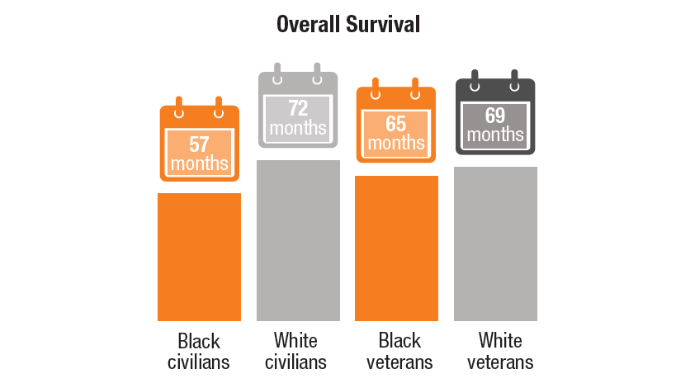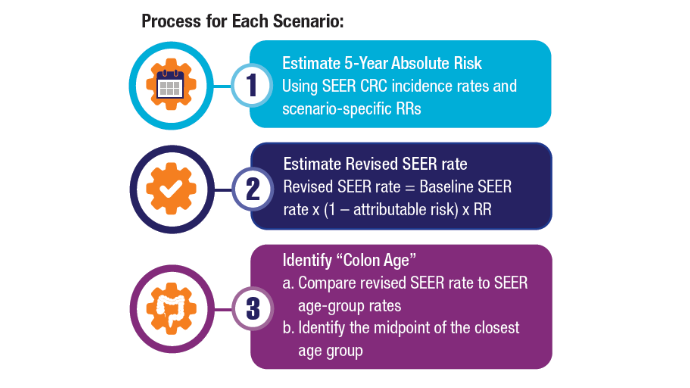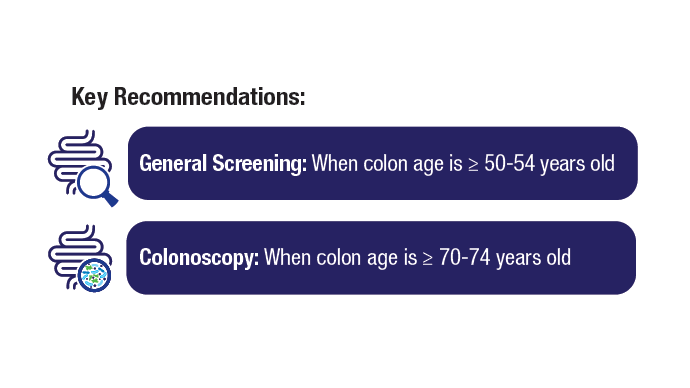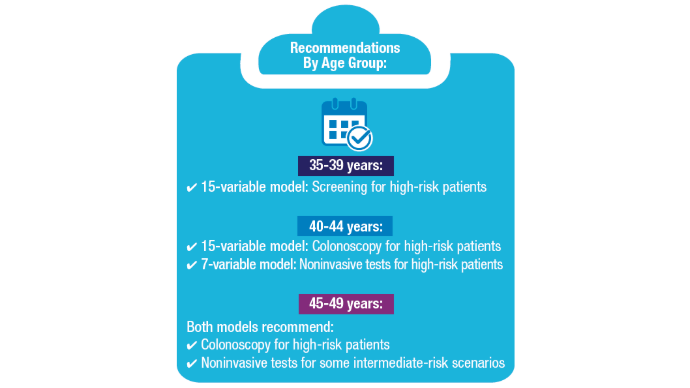Access, Race, and "Colon Age": Improving CRC Screening










Colorectal cancer (CRC) is the second leading cause of cancer-related deaths in the United States, with an estimated 53,010 deaths and 152,810 new diagnoses in 2024.1
Incidence of CRC is higher in Black patients than in White patients, and racial disparities in survival persist in the general population1 until individuals reach Medicare eligibility.2 Interestingly, data published in 2024 have shown that this trend does not appear in the VHA system, indicating that access to care may play a more crucial role than racial contributions in influencing outcomes among non-Hispanic Black and White individuals.2
CRC rates and deaths are steadily decreasing among those aged 50 years or older but are rising in individuals under age 50. Early-onset colorectal cancer (EOCRC)—cases diagnosed before age 50—now represent 10% to 11% of all CRC. Of these cases, 75% occur in people aged 40 to 49, whereas about 50% affect individuals younger than 45. A novel measure, “colon age,” quantifies EOCRC risk by taking biological factors into account. This metric can help VHA providers clarify CRC risk and help patients better grasp their screening options before age 45 or 50.3
 CRC Racial Disparities: VHA vs US Population1,2
CRC Racial Disparities: VHA vs US Population1,2 CRC Racial Disparities: VHA vs US Population1,2
CRC Racial Disparities: VHA vs US Population1,2
 CRC Racial Disparities: VHA vs US Population1,2
CRC Racial Disparities: VHA vs US Population1,2 Colon Age: Estimating Risk for Early-Onset CRC33
Colon Age: Estimating Risk for Early-Onset CRC33
With EOCRC cases on the rise, a greater understanding of risk factors in US veterans is needed to establish recommendations for earlier screening. Imperiale, et al., recently sought to develop a new metric for estimating CRC risk in veterans based on “colon age.” This model still needs to be validated before it is ready for primetime, however. Colon Age: Estimating Risk for Early-Onset CRC3
Colon Age: Estimating Risk for Early-Onset CRC3
By incorporating risk factors for early-onset colorectal cancer with incidence rates, "colon age" may facilitate shared decision making regarding screening for male veterans aged 50 years or younger. Colon Age: Estimating Risk for Early-Onset CRC3
Colon Age: Estimating Risk for Early-Onset CRC3
For individuals aged 45 to 49, a 7-variable model might be more favorable for VHA patients, providers, and the overall health care system because the highest risk scenario warrants noninvasive screening if the decision threshold is based on the SEER rate for this age group.3 CRC Racial Disparities: VHA vs US Population1,2
CRC Racial Disparities: VHA vs US Population1,2 CRC Racial Disparities: VHA vs US Population1,2
CRC Racial Disparities: VHA vs US Population1,2
 CRC Racial Disparities: VHA vs US Population1,2
CRC Racial Disparities: VHA vs US Population1,2 Colon Age: Estimating Risk for Early-Onset CRC33
Colon Age: Estimating Risk for Early-Onset CRC33
With EOCRC cases on the rise, a greater understanding of risk factors in US veterans is needed to establish recommendations for earlier screening. Imperiale, et al., recently sought to develop a new metric for estimating CRC risk in veterans based on “colon age.” This model still needs to be validated before it is ready for primetime, however. Colon Age: Estimating Risk for Early-Onset CRC3
Colon Age: Estimating Risk for Early-Onset CRC3
By incorporating risk factors for early-onset colorectal cancer with incidence rates, "colon age" may facilitate shared decision making regarding screening for male veterans aged 50 years or younger. Colon Age: Estimating Risk for Early-Onset CRC3
Colon Age: Estimating Risk for Early-Onset CRC3
For individuals aged 45 to 49, a 7-variable model might be more favorable for VHA patients, providers, and the overall health care system because the highest risk scenario warrants noninvasive screening if the decision threshold is based on the SEER rate for this age group.3 CRC Racial Disparities: VHA vs US Population1,2
CRC Racial Disparities: VHA vs US Population1,2 CRC Racial Disparities: VHA vs US Population1,2
CRC Racial Disparities: VHA vs US Population1,2
 CRC Racial Disparities: VHA vs US Population1,2
CRC Racial Disparities: VHA vs US Population1,2 Colon Age: Estimating Risk for Early-Onset CRC33
Colon Age: Estimating Risk for Early-Onset CRC33
With EOCRC cases on the rise, a greater understanding of risk factors in US veterans is needed to establish recommendations for earlier screening. Imperiale, et al., recently sought to develop a new metric for estimating CRC risk in veterans based on “colon age.” This model still needs to be validated before it is ready for primetime, however. Colon Age: Estimating Risk for Early-Onset CRC3
Colon Age: Estimating Risk for Early-Onset CRC3
By incorporating risk factors for early-onset colorectal cancer with incidence rates, "colon age" may facilitate shared decision making regarding screening for male veterans aged 50 years or younger. Colon Age: Estimating Risk for Early-Onset CRC3
Colon Age: Estimating Risk for Early-Onset CRC3
For individuals aged 45 to 49, a 7-variable model might be more favorable for VHA patients, providers, and the overall health care system because the highest risk scenario warrants noninvasive screening if the decision threshold is based on the SEER rate for this age group.3
